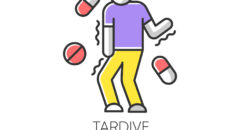The older neuroleptics also known as first-generation neuroleptics or ‘typical’ neuroleptics are more likely to produce Tardive Dyskinesia than the newer neuroleptics.
The newer, second-generation neuroleptics or ‘atypical’ neuroleptics have shown to be less likely to produce Tardive Dyskinesia in patients and show a TD rate of 13.1 percent for longtime users versus 32.4 percent for users of first-generation neuroleptics.
There are a few drugs designed to treat digestive conditions as well as psychosis that are associated with Tardive Dyskinesia.
Black Americans and Tardive Dyskinesia
What’s even less known is Tardive Dyskinesia is more likely to occur in Africans and Black Americans than Caucasians as presented in a paper on psychiatryonline.org. It describes how a greater number of Black Americans are slow to metabolize antipsychotic drugs than Caucasians and, therefore, are prescribed higher doses of these drugs. Because of these increased doses of medication, this may be associated with the increase in Tardive Dyskinesia in Africans and Black Americans.






